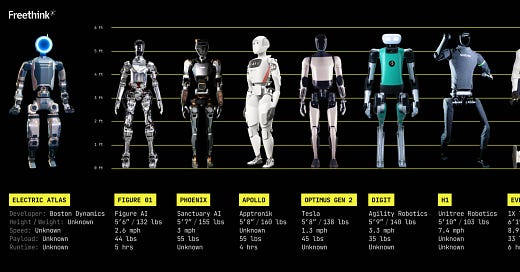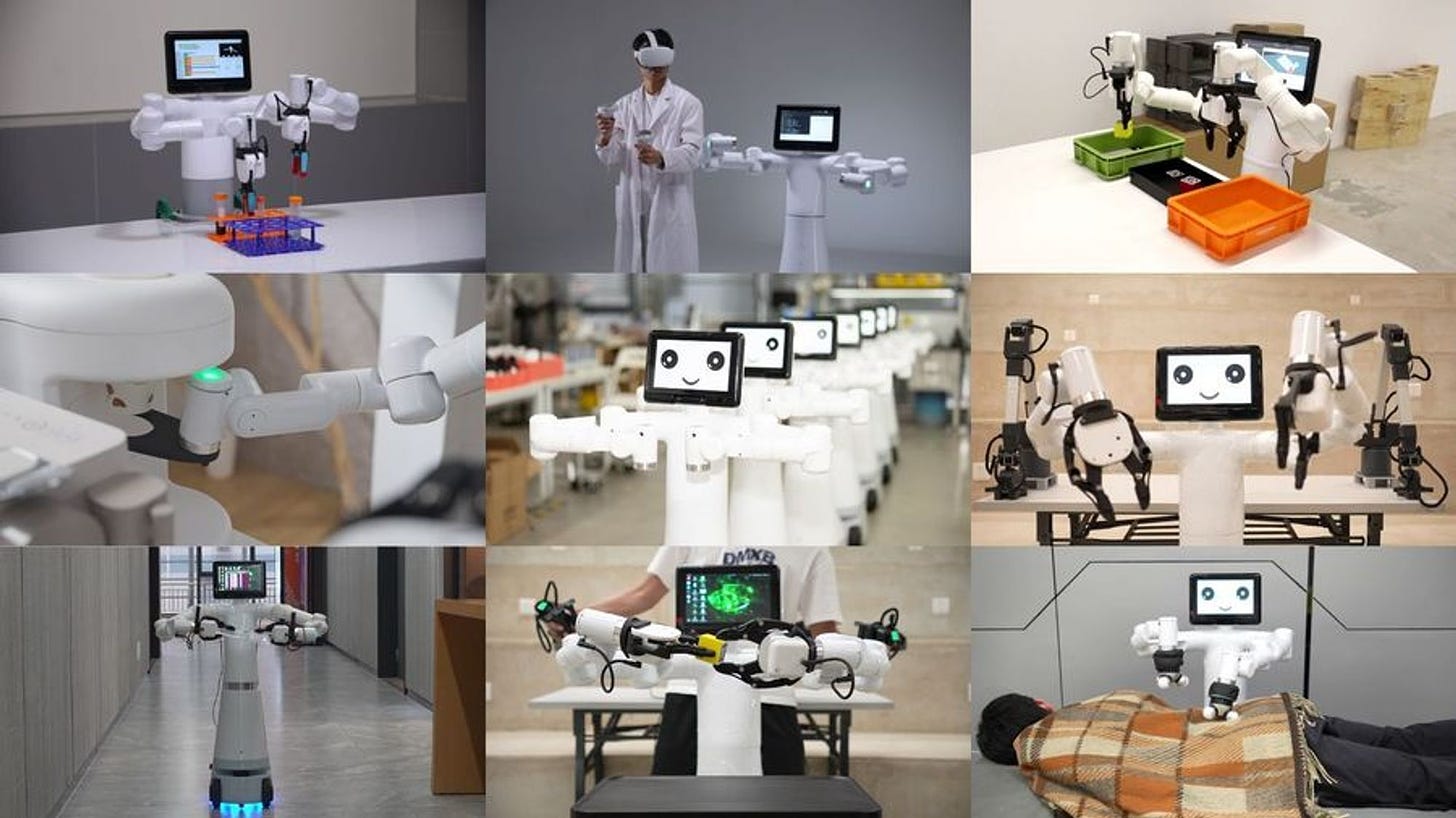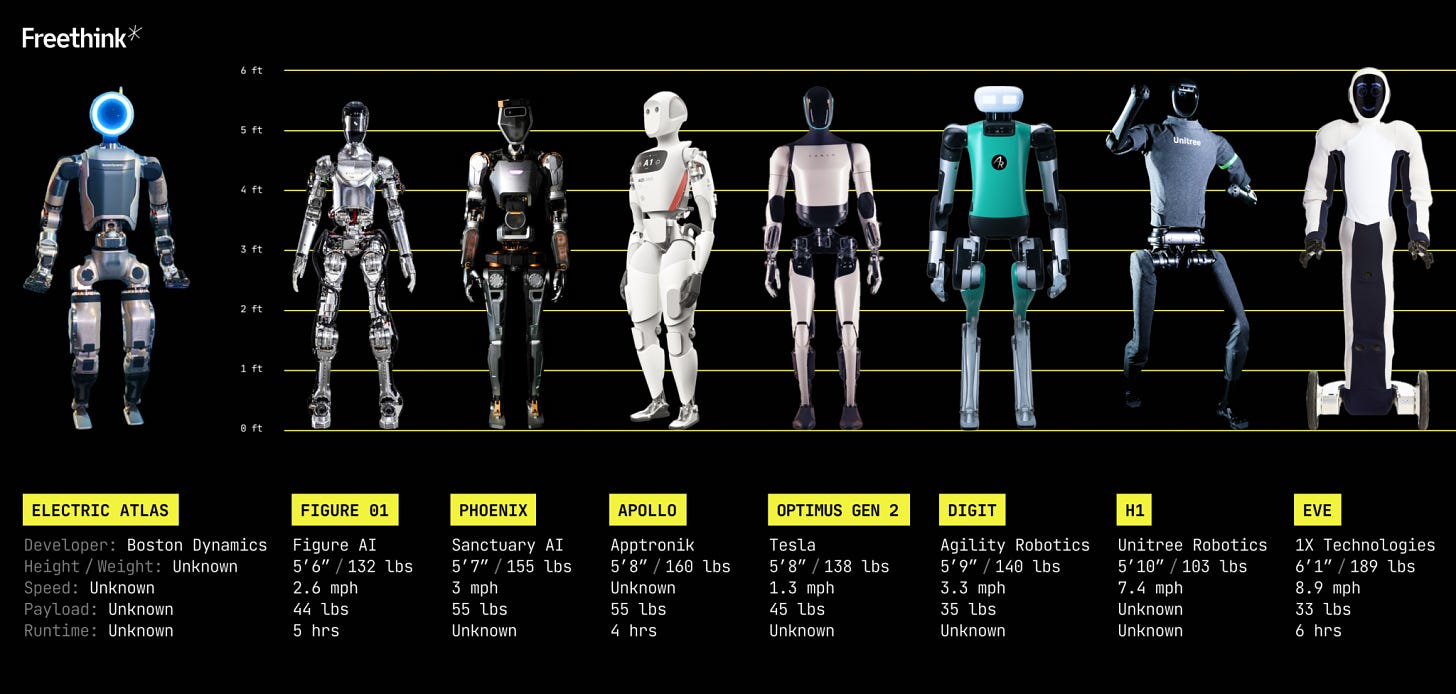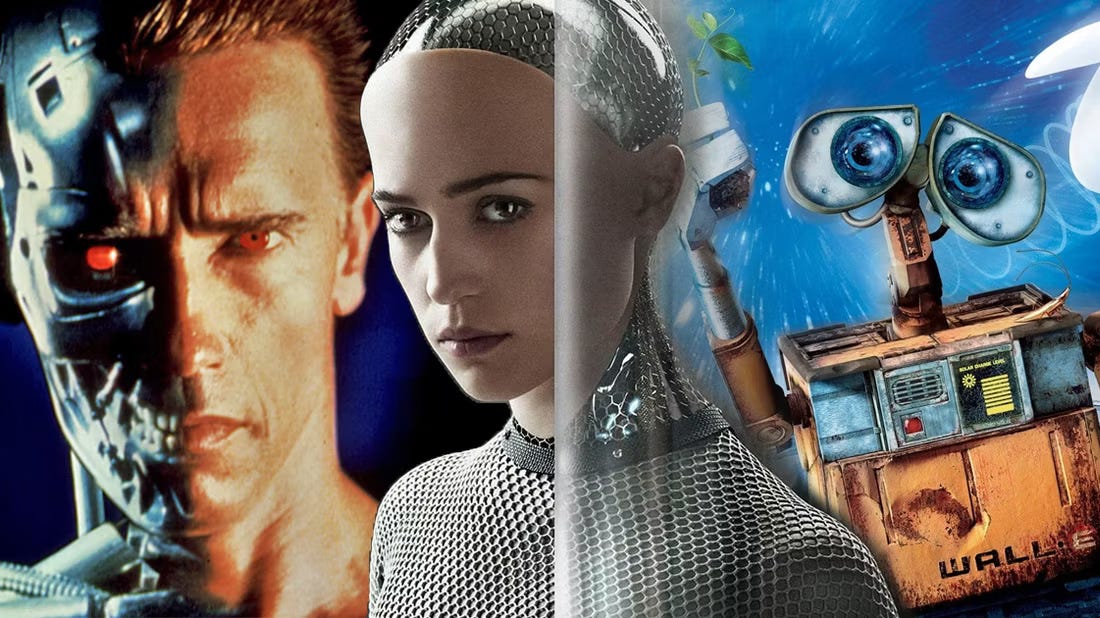🦾 2024: The Year of the Humanoid?
Humanoid pilot projects aim to address labor shortages and automate low-skill, repetitive, and physically demanding tasks, as firms seek to have machines relieve humans in tedious or dangerous roles.
This year is poised to be remembered as the "Year of the Humanoid," with humanoids making waves across industries. The rapid advancements in artificial intelligence (AI) since 2022 have accelerated the creation of these sophisticated humanoid robots. In the past few months, companies have been unveiling new models that are more lifelike and capable than ever before. As these robots become more prevalent, ethical discussions about their roles, rights, and the implications of their integration into society are intensifying.
Humanoid Robots Boom
Humanoid robots are (slowly) beginning to handle tasks on factory floors, specifically car manufacturing plants.
BMW, in collaboration with robotics startup Figure, released a video demonstrating its 01 humanoid robot being trained at a BMW car plant in Spartanburg, South Carolina. The 01 robot moved part onto a jig with placement tolerances of less than a centimeter and could correct its placements using its AI-powered neural network.
Similarly, Mercedes-Benz signed an agreement with robotics startup Apptronik in March, where its Apollo humanoid robot (a 160-pound bipedal robot) will be tested for tasks like inspecting and delivering components to human workers on the production line at a factory in Hungary. The country has experienced labor shortages for several years, with Audi and Mercedes having both expressed concerns regarding labor supply back in 2016.
“This is a new frontier and we want to understand the potential both for robotics and automotive manufacturing to fill labor gaps in areas such as low-skill, repetitive, and physically demanding work and to free up our highly skilled team members on the line to build the world’s most desirable cars.”
—Mercedes’ production chief Jörg Burzer.
Tesla is also in the race with its 121 pounds, US$30,000 humanoid robot, Optimus. The company recently showcased a second-generation prototype, and though the deployment timeline is uncertain, Optimus is expected to start performing simple factory tasks shortly (between 2025 and 2026).
At the global scale, new companies are appearing with their humanoids, like Agility Robotics’ “Digit”, being piloted in Amazon’s US warehouses, or Galbot (established in May 2023)—a Beijing-based startup backed by the Hong Kong government, or Elephant Robotics, which introduced the Mercury Series. Sanctuary, Persona AI, and Unitree also have commercial humanoid robot prototypes.
Investment into the production of humanoid robots has soared globally this year thanks to the AI boom, with 13 start-ups in China raising more than US$344 million in the first half of this year.
Humanoid robots are the first wave of a promised future where factory floors won't need expensive redesigns for automation, and where humanoids will navigate and operate within environments designed for human workers. All these pilot projects aim to address labor shortages and automate low-skill, repetitive, and physically demanding tasks, as firms seek to have machines relieve humans in tedious or dangerous roles in the context of an aging population in major countries.
Why are we creating Humanoids, when we could create robots that have any other shape?
Robots are already a part of our daily lives. But now, there's a growing trend to make them look more human. From Boston Dynamics' dog-like robots to Tesla, Mercedes, and BMW's humanoids, there's a clear trend. But why are we striving to create robots in our image?
The Design Principle: Form Follows Function
The principle that "form follows function" is a fundamental concept in design and engineering, where the story goes, the shape of an object should relate to its intended purpose.
Our everyday environments—homes, offices, public spaces, factories—are designed with human dimensions and capabilities in mind. Robots with a humanoid form can navigate human spaces more easily, using stairs, doorways, and furniture as humans do. This eliminates the need to redesign existing facilities.
Many tools, devices, and interfaces are created for human use. A humanoid robot with human-like hands and movement capabilities can operate these tools and devices without modifications, which makes them advantageous in scenarios where robots are introduced into existing systems.
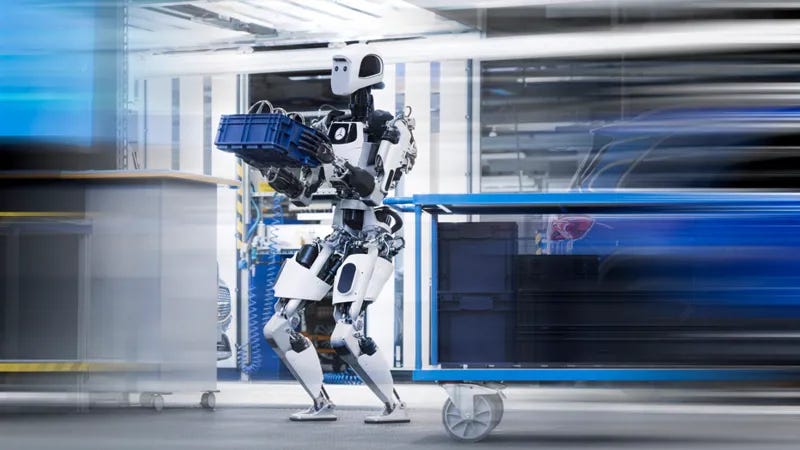
In addition, humanoid robots can, in theory, be more intuitive for humans to interact with. Their human-like appearance and movements can make communication and cooperation smoother, and research has shown that humans tend to respond more positively to entities that resemble them…up to a point.
The Humanoid Dilemma
In theory, this psychological aspect could end up playing a significant role in the acceptance and effectiveness of robots in social settings, healthcare, and customer service—however, people tend to have specific expectations of how a robot should behave if it looks like a human. This is where the concept of the "uncanny valley" comes into play, an effect where robots appear eerily lifelike. When a robot appears almost human but not quite, it can bring discomfort and anxiety, as the brain struggles with a cognitive dissonance that overloads the brain, triggering an unsettling response. Well, that, and the rather large amount of apocalyptic movies featuring deadly humanoids (The Terminator, I, Robot…) surely doesn’t help the collective mindset.
Another point is that when humanoid robots look too much like us, there is a risk they could be seen as competitors in the workforce rather than as tools to supplement human skills. To mitigate these concerns, it’s essential to view robots as partners designed to complement human abilities rather than replace them to guide the development and integration of robots in a way that supports human skills and fosters a harmonious coexistence between man and machine.
That being said, researchers are working tirelessly to create a humanoid robot that could be able to work in various capacities with humans, and without creating any sort of fear.
"We are working to help reshape public perceptions of robots as friendly and collaborative rather than terrifying like The Terminator."
—Xiaolong Wang, professor in the Department of Electrical and Computer Engineering at the UC San Diego Jacobs School of Engineering.
Why is it happening now?
Simply put, AI.
The software that controls the movements of bipedal bots often uses model-based predictive control, leading to systems like Boston Dynamics' parkour robot, Atlas. However, these robot brains demand human expertise to program and do not adapt well to unfamiliar situations. Reinforcement learning (RL), where AI learns through trial and error, seems to offer a better approach.
"We’ve seen wonderful progress in AI in the digital world with tools like Chat GPT, but I think that AI in the physical world has the potential to be even more transformational."
—Ilija Radosavovic, a computer scientist at the University of California, Berkeley.
So, Can Humanoid Robots Replace Six-Axis Robots?
Technically, yes…eventually. But humanoid robots are inherently more complex than six-axis robots. Their advanced mechanics require sophisticated tech and software, which are still under development. Meanwhile, six-axis robots are already deployed, highly precise, and reliable. In addition, the development, production, and maintenance costs of humanoid robots are significantly higher than those of six-axis robots at the moment, making them less feasible for widespread industrial use. The technology of humanoids isn’t yet mature enough to handle the full spectrum of tasks performed by six-axis robots: humanoid robots typically have higher power consumption, leading to shorter operational periods and requiring frequent recharges or advanced power solutions.
And finally, the same challenge befalls humanoid robots as any other robots: the safety of humanoid robots in environments shared with humans.
In the future, advances in sensor technology will improve the robots' ability to perceive and interact with their environment safely and effectively, so humanoids might start taking over roles where human-like interaction is beneficial, such as service industries, healthcare, and domestic environments, while six-axis robots will continue to dominate areas requiring high precision.
We might see an incremental implementation as technology improves and costs decrease, where humanoid robots will gradually be integrated into more industries, taking on tasks that are currently challenging for them.
While humanoid robots hold significant potential, they are not yet ready to fully replace six-axis robots or humans, and the future will likely see a blend of all, complementing the other's strengths and addressing their respective limitations.
Humanoids have taken over the news recently, and despite the remaining challenges, we’re excited to see what comes next!


